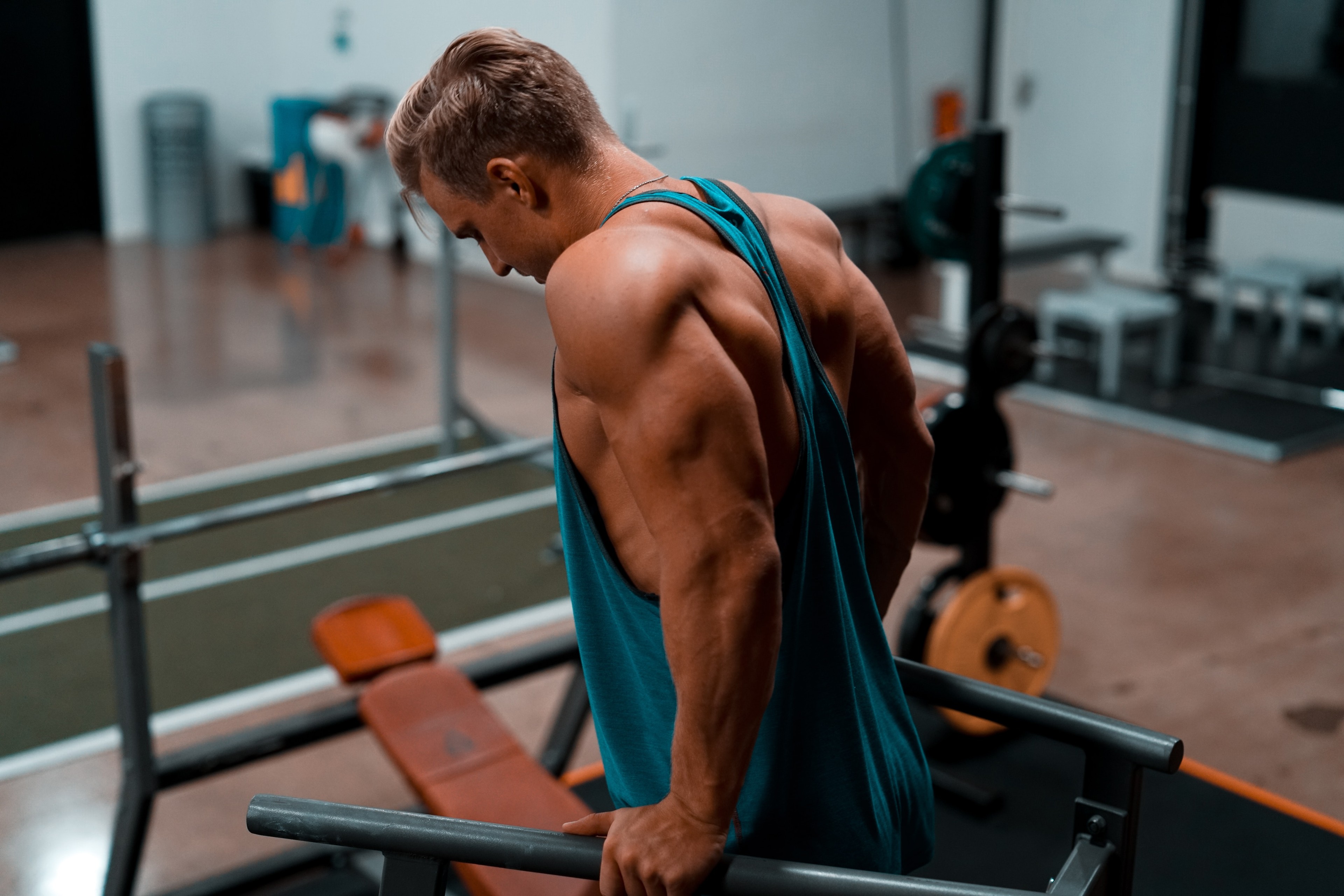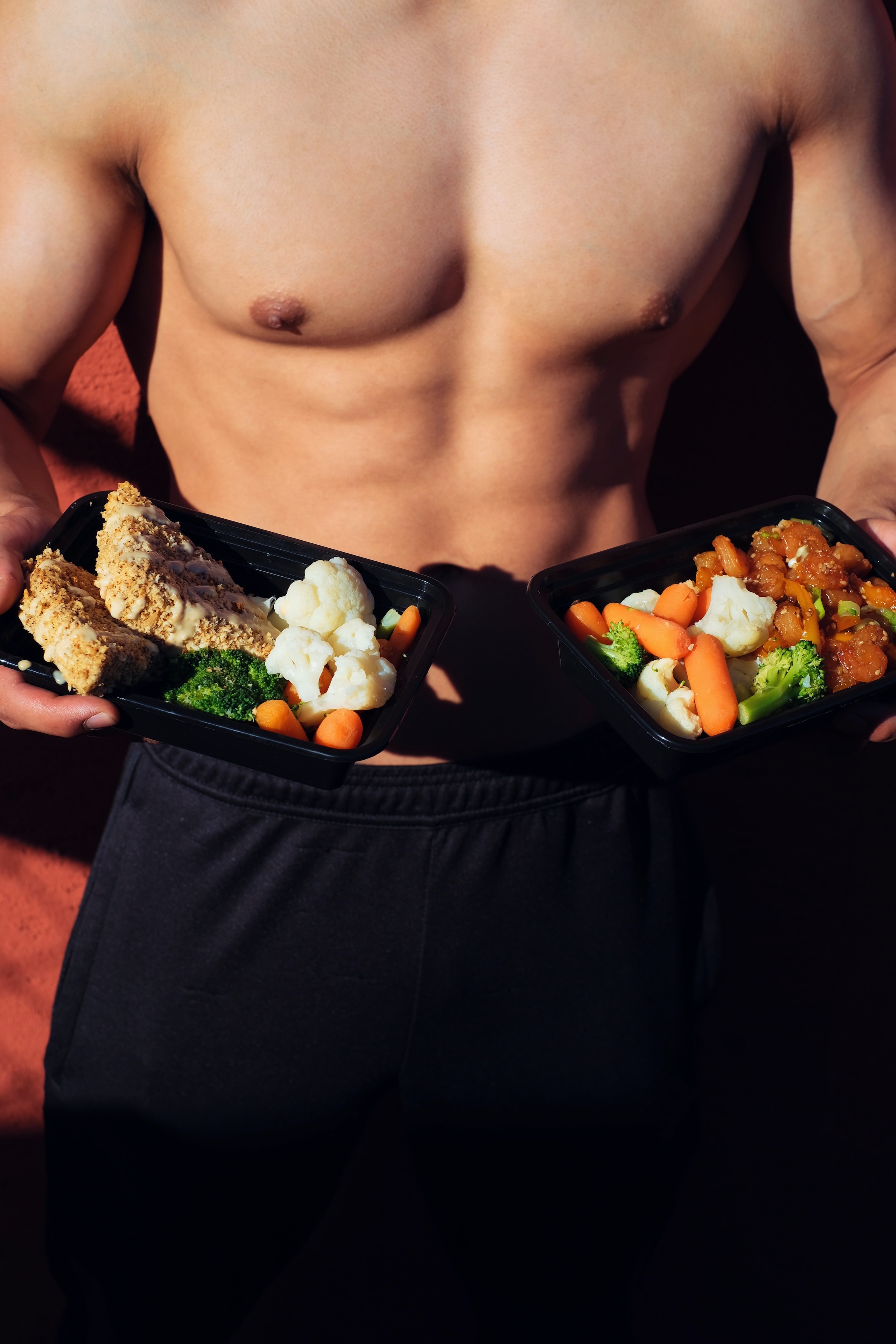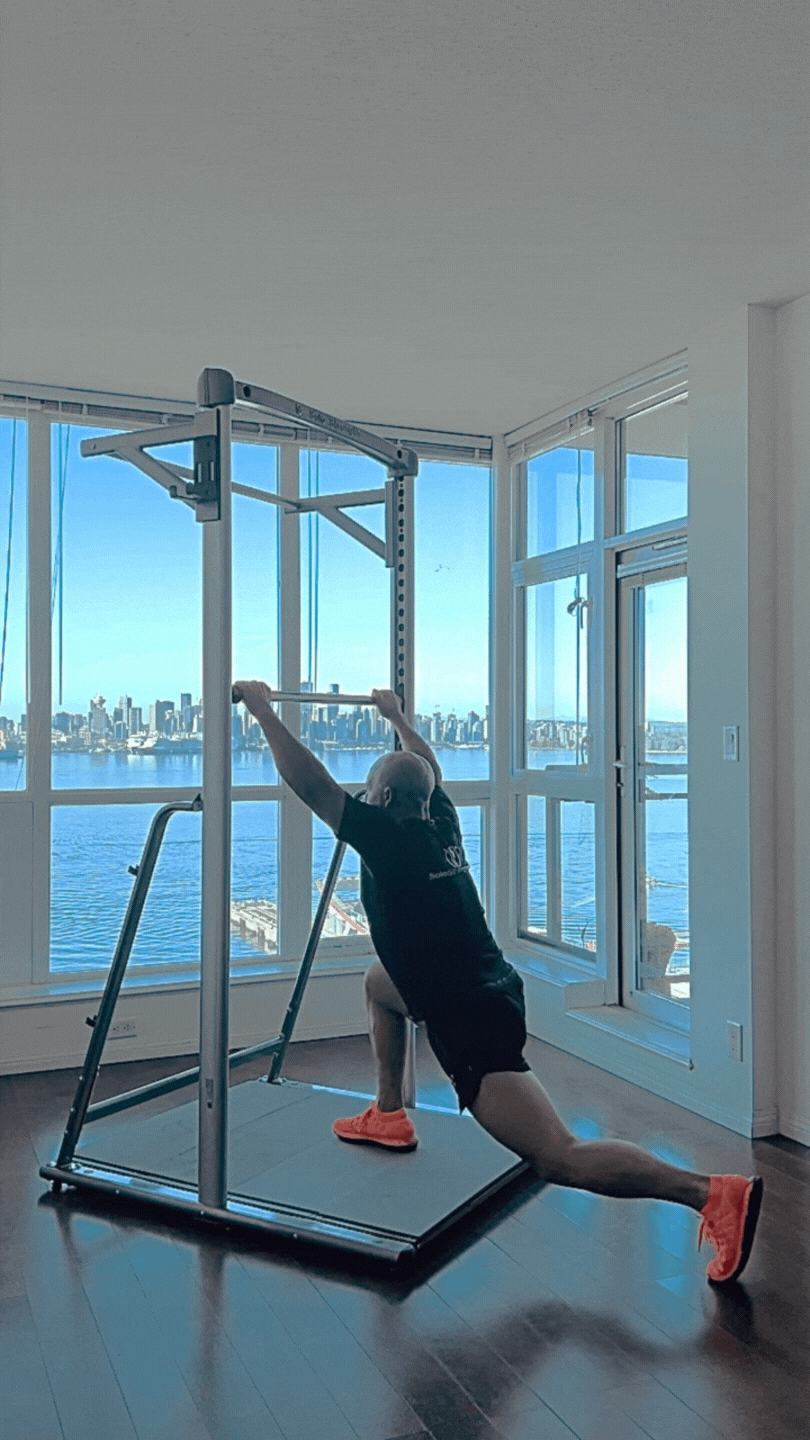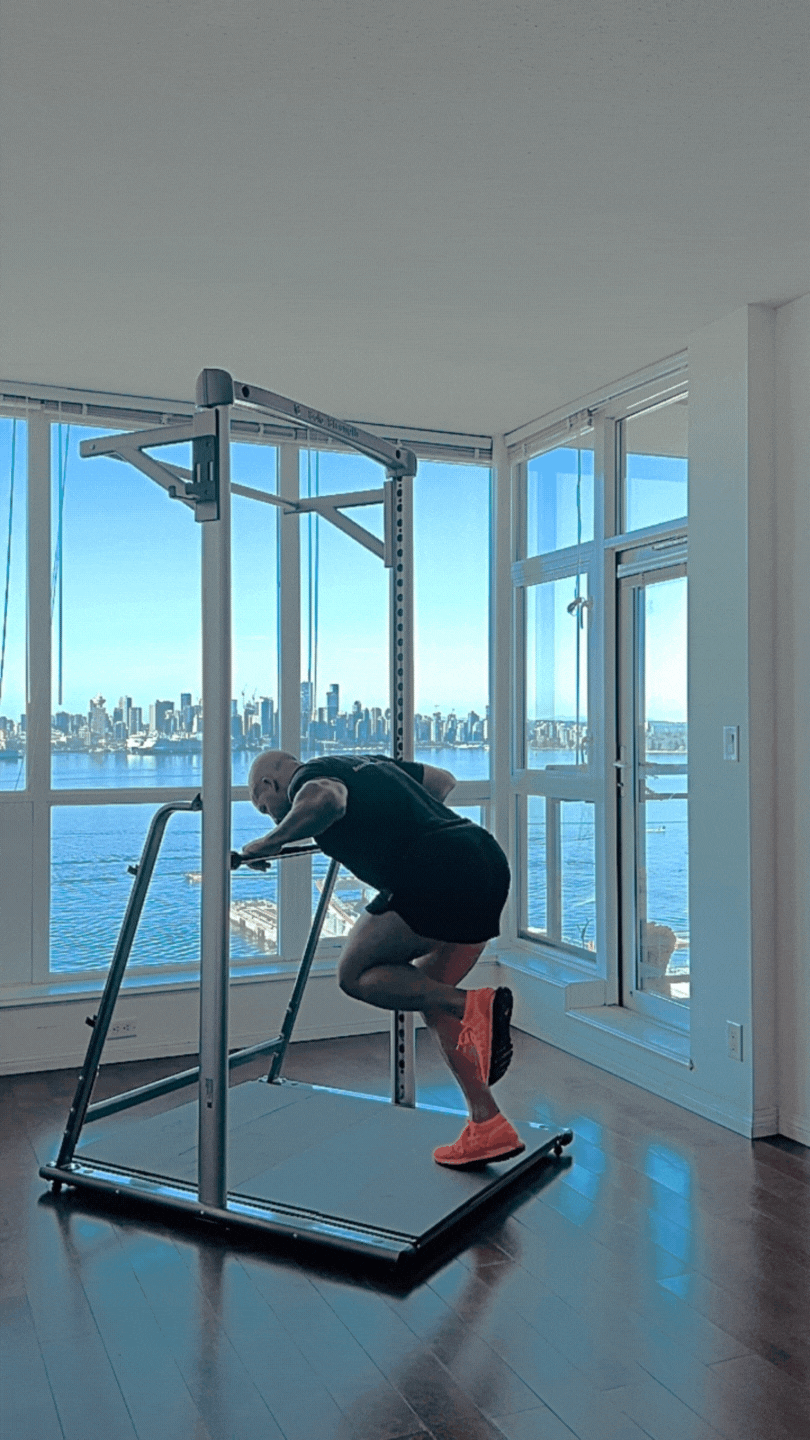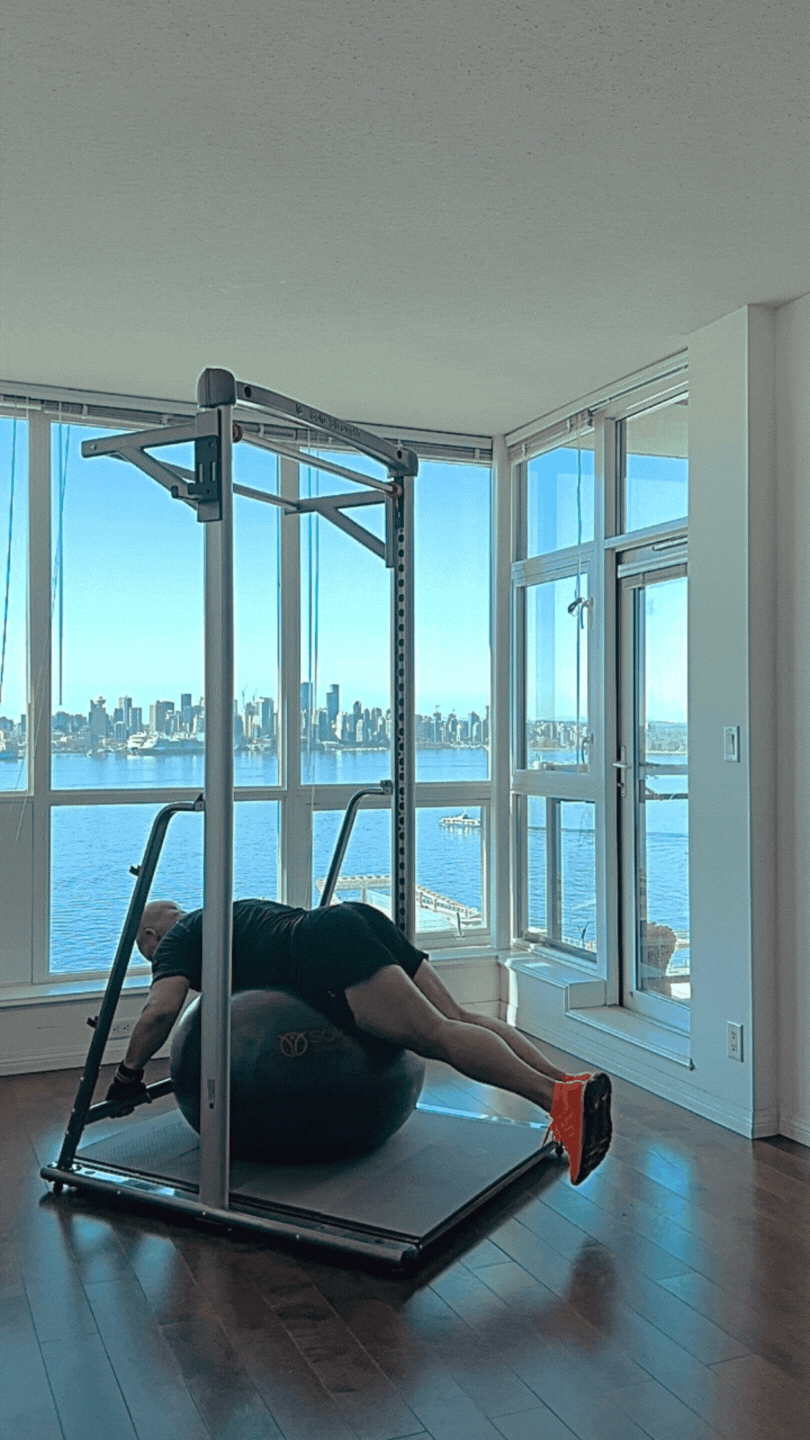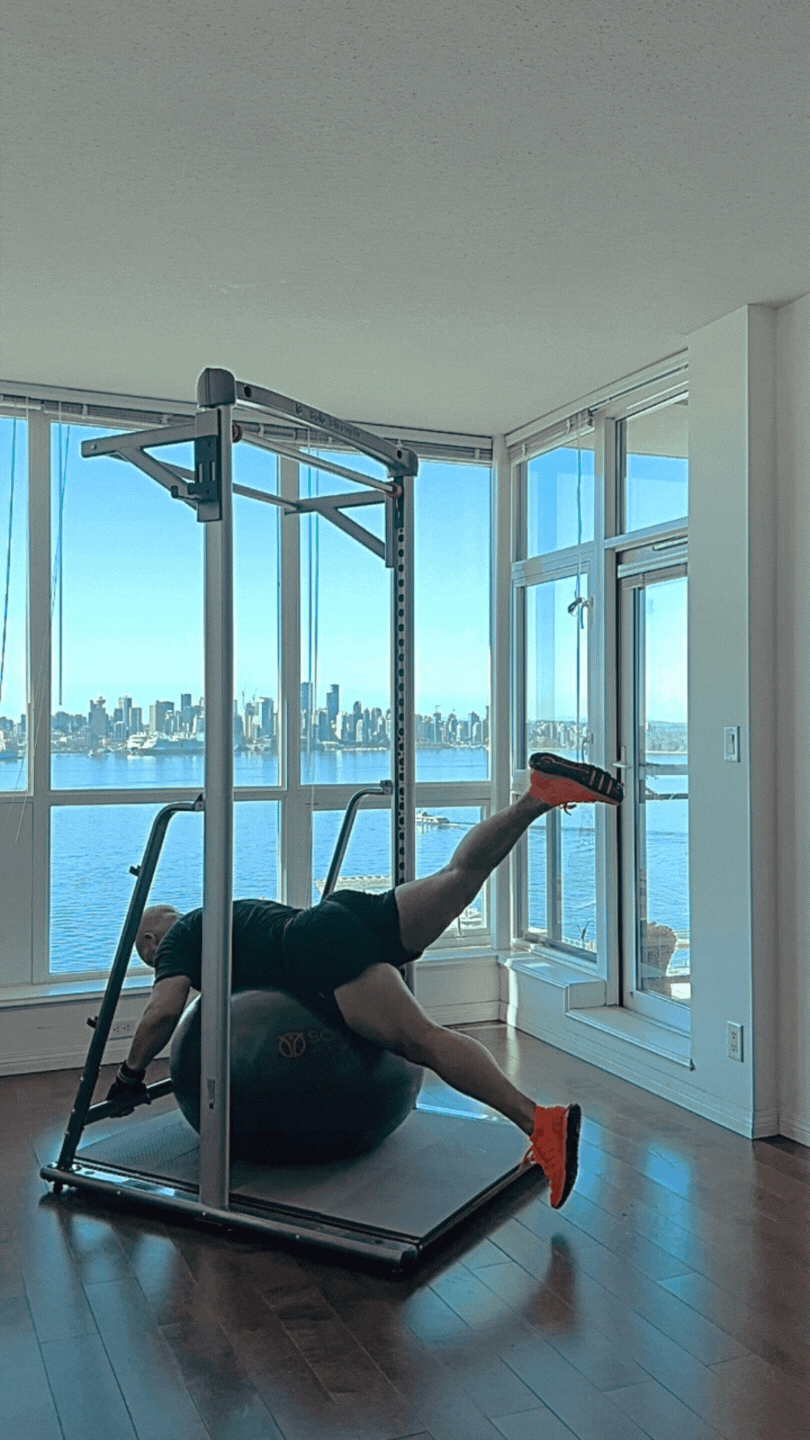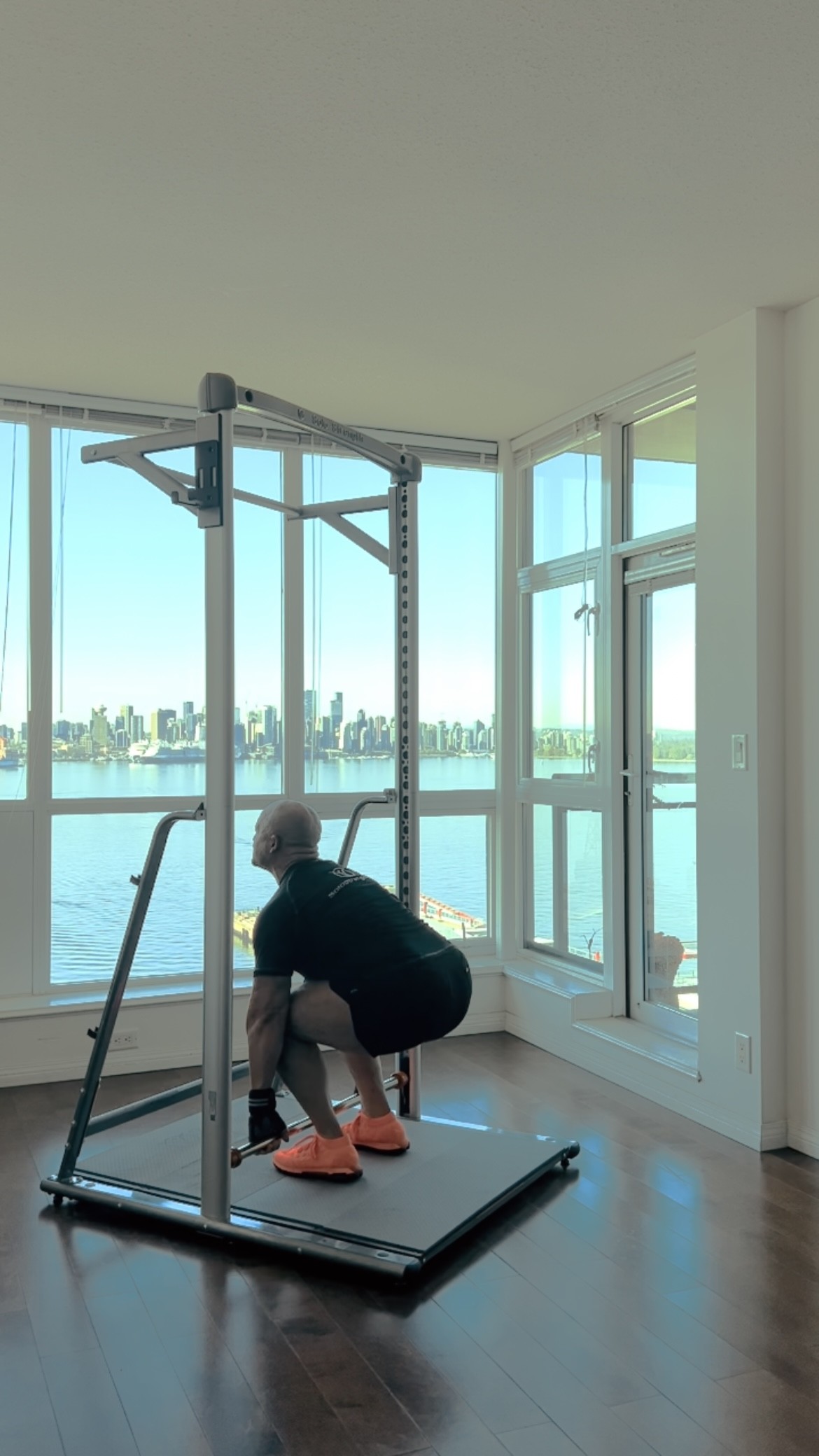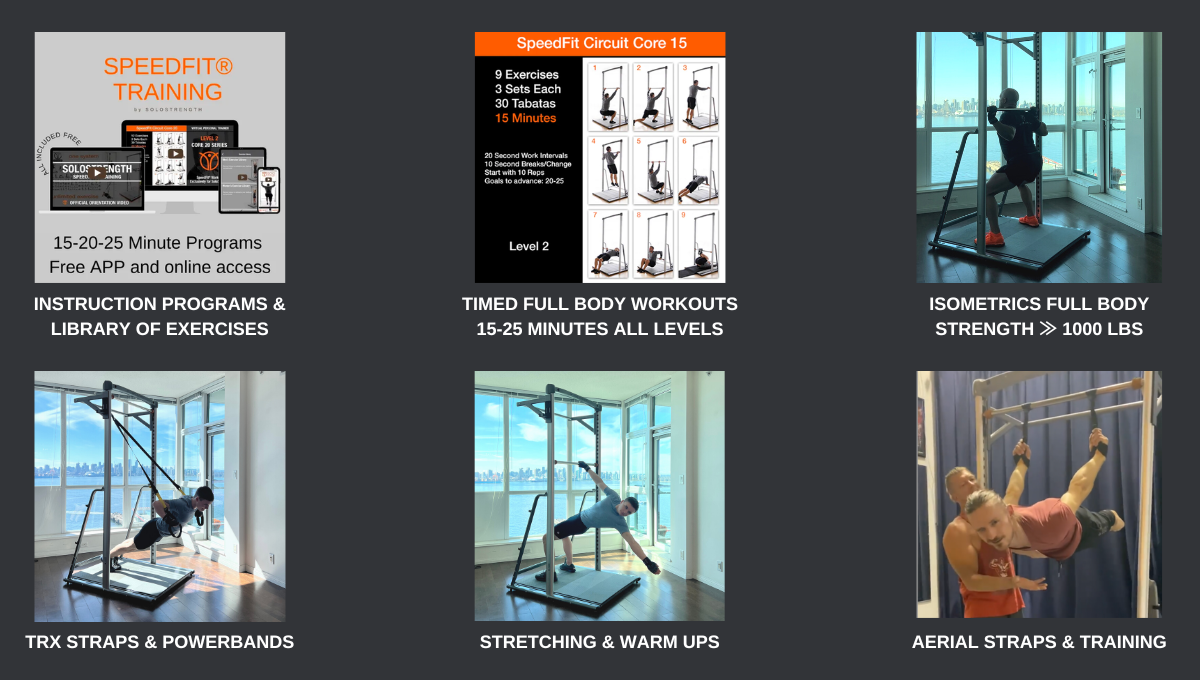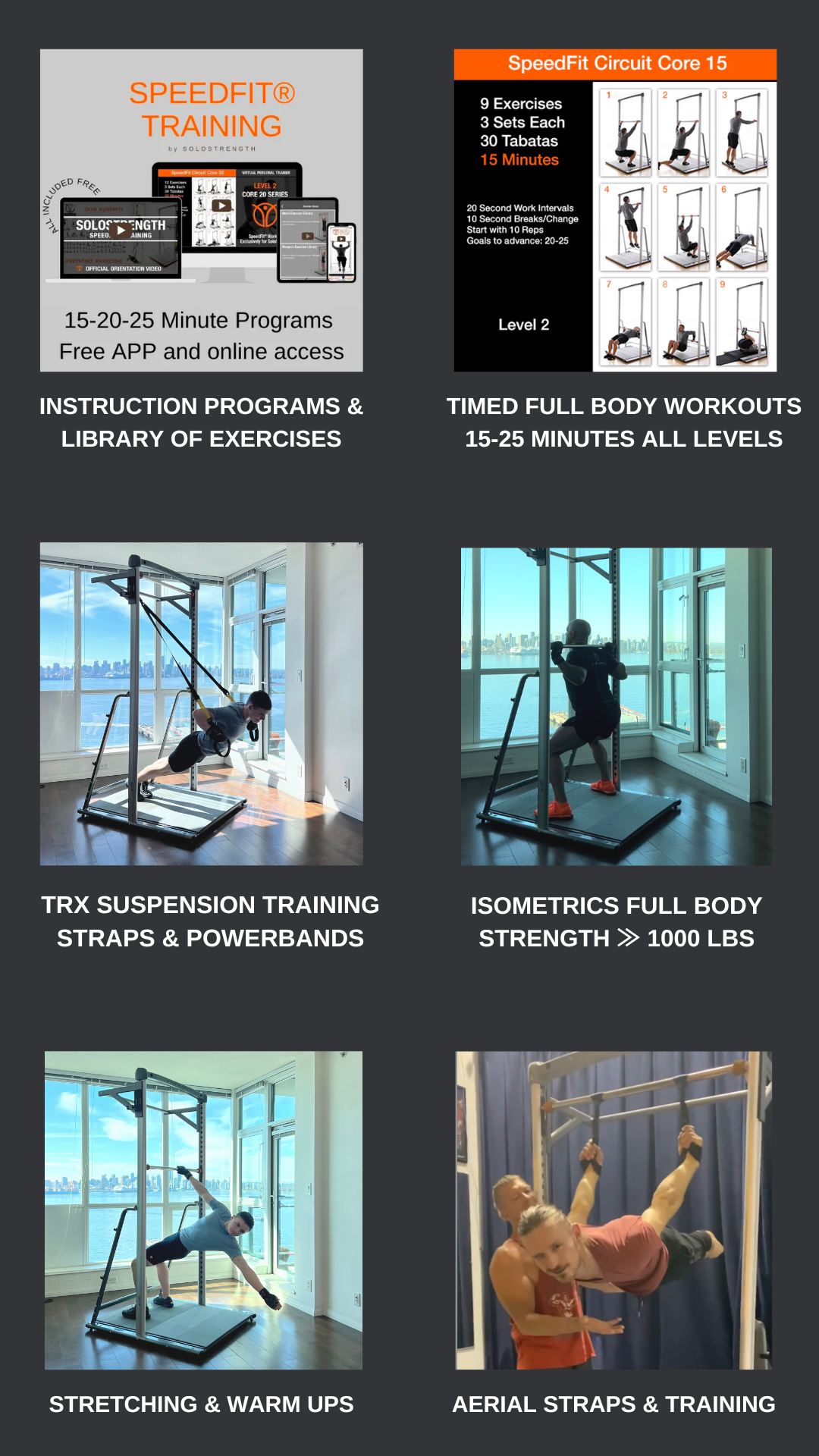How to Build your Dream Bodyweight Home Gym
Building a successful home gym routine can be a challenging task. With busy schedules, limited space, and competing priorities, it's easy to let your fitness goals fall by the wayside. However, with the rise of bodyweight training and the availability of affordable home gym equipment, working out at home has become more popular than ever before.
But where do you start? How do you create a space that's functional, inspiring, and effective? How do you stay motivated and consistent with your workouts? And how do you maximize your results with bodyweight training at home? In this blog post, we will answer these questions and more, providing you with practical tips and advice for building a successful home gym routine.
We'll start by exploring the benefits of working out at home and the key considerations when assessing your space and budget. We'll then dive into the top five must-have pieces of bodyweight equipment and how to set up your home gym for success. Next, we'll walk you through a step-by-step guide to creating an effective bodyweight workout routine, and provide tips for maximizing your results with bodyweight training at home.
But that's not all. We'll also explore the critical role of nutrition in building muscle and fueling your workouts at home, as well as provide tips and tricks for staying motivated and consistent with your home gym routine. Whether you're a beginner or an experienced fitness enthusiast, this blog post will provide you with the tools and inspiration you need to take your home gym routine to the next level. So, let's get started!
Assessing your Space and Budget: How to Plan Your Home Gym
Assessing your space and budget is a crucial first step when building a home gym with bodyweight equipment. First, take a look at the space you have available. Determine how much room you have and what type of flooring you have. This will help you choose the right bodyweight equipment for your space. For example, if you have a small space, you may want to choose equipment that is compact and can be easily stored away when not in use. Alternatively, if you have a larger space, you may be able to invest in more equipment.
Once you have an idea of the space you have available, consider your budget. Determine how much you are willing to spend on your home gym equipment. Keep in mind that bodyweight equipment can be very affordable, but you may also want to invest in some higher-end equipment that is more durable or has more features. You can find a range of bodyweight equipment at different price points, so be sure to shop around and compare prices. For reference, the average gym membership costs around $700-1000 per year.
Another consideration when assessing your space and budget is the type of workout you want to do. Some bodyweight equipment may be better suited for specific exercises or workouts. For example, if you are looking to do more advanced exercises such as pull-ups or dips, you may need a doorway pull-up bar or dip station. However, if you are just starting out, you may want to invest in equipment that is more versatile and can be used for a range of exercises.
Ultimately, the key to assessing your space and budget is to be realistic about what you can afford and what you can fit in your space. Don't try to cram too much equipment into a small space, as this can be dangerous and limit your ability to move around freely. Instead, focus on selecting a few key pieces of equipment that will allow you to do a variety of exercises and build a solid foundation for your home gym.
At SoloStrength, we’ve built mounted options for those that want to save space and freestanding training stations for those that want the ultimate experience. The mounted training stations include the Doorway, Corner, Wall-Mounted, and Foldup Wall-Mounted variants. The Freestanding is the most versatile station, with an Outdoor model available soon.
Choosing the Right Bodyweight Equipment: Top 5 Must-Haves
Choosing the right bodyweight equipment is essential to building a successful home gym. When selecting equipment, consider your fitness goals and the exercises you want to perform. Here are the top 5 must-have bodyweight equipment for a home gym:
Pull-up Bar: A pull-up bar is an excellent piece of equipment for building upper body strength. It can be used for a variety of exercises, such as pull-ups, chin-ups, and hanging leg raises. There are several types of pull-up bars, such as wall-mounted, doorway-mounted, and freestanding. Select the type that suits your space and budget.
Dip Station: A dip station is a must-have for building upper body strength, particularly the triceps and chest muscles. It consists of two parallel bars that are used for exercises such as dips and push-ups. Some dip stations also have pull-up bars, making them a versatile piece of equipment.
Suspension Trainer: A suspension trainer is a versatile piece of equipment that allows for full-body workouts. It consists of two straps that can be anchored to a door, wall, or ceiling. Suspension trainers are excellent for developing strength, balance, and stability. One of the more commonly used systems is the TRX Suspension Trainer. It is recommended that it be used with the Rear Support Bar (Freestanding only) to maximize space-saving efficiency.
Resistance Bands: Resistance bands are an affordable and versatile piece of equipment that can be used for a range of exercises. They come in different resistance levels, making it easy to adjust the difficulty of your workout. Resistance bands can be used for exercises such as bicep curls, squats, and shoulder presses. We offer a 6-piece bundle with resistance levels ranging from 3-90 lbs.
Adjustable Bar: Depending on which bodyweight exercises you do, it can be difficult to do more than a few reps. Sometimes even one is difficult. Having a system that can adjust in height so you can aid with support from your legs is important as a beginner. This allows you to build the necessary strength so that you can eventually lift your body. Advanced athletes benefit from this too. Helping yourself with your legs at the end of a workout is how you get those additional reps in to break through plateaus.
In summary, choosing the right bodyweight equipment is crucial for building a successful home gym. The top 5 must-have bodyweight equipment for a home gym are a pull-up bar, dip station, suspension trainer, resistance bands, and an adjustable bar. We’ve taken all of these into account when designing the SoloStrength Training Stations, which is why we call it the Ultimate series. By investing in these essential pieces of equipment, you can perform a range of exercises and achieve your fitness goals. You can view more about our review of Home Calisthenic Gyms and building your dream bodyweight gym.
Setting Up Your Home Gym: Tips and Tricks
Setting up your home gym can be a challenging task, but with the right tips and tricks, you can create an effective and efficient workout space. Here are some essential tips for setting up your home gym:
Identify Your Space: Before purchasing equipment, identify the available space in your home. Consider the room's dimensions, ceiling height, and ventilation. Ensure that there is enough space to move around comfortably and that the equipment can fit without compromising safety.
Plan Your Equipment: Plan the equipment you want to include in your home gym. Consider your fitness goals and the exercises you want to perform. Start with essential equipment such as a mat, weights, training station, and resistance bands, and gradually add equipment as your fitness level improves.
Invest in Quality Equipment: When purchasing equipment, invest in high-quality equipment that is durable and safe. Avoid buying cheap or second-hand equipment that may be prone to breaking or looks unstable. Those can lead to injury and set you back months in your fitness journey.
Use Multi-Purpose Equipment: Consider investing in multi-purpose equipment that can be used for multiple exercises. For example, an adjustable training station can be used for any type of bodyweight exercise you can think of.
Optimize Your Space: Optimize your space by using storage solutions that keep your equipment organized and accessible. Consider installing shelves, trays, or hooks to keep your equipment off the floor and out of the way.
Create a Motivating Environment: Create a motivating environment by adding motivational posters or paintings, good lighting, and music. Make your home gym an inviting space that inspires you to work out.
In summary, setting up your home gym can be a rewarding experience if you follow these tips and tricks. Identify your space, plan your equipment, invest in quality equipment, use multi-purpose equipment, optimize your space, and create a motivating environment. With a well-designed home gym, you can achieve your fitness goals and lead a healthy lifestyle.
Creating a Bodyweight Workout Routine: A Step-by-Step Guide
Creating a bodyweight workout routine is an effective way to improve strength, endurance, and flexibility. Here is a step-by-step guide to creating a bodyweight workout routine:
Set Your Fitness Goals: Identify your fitness goals before creating a workout routine. Determine whether you want to build strength, lose weight, or improve your overall fitness level.
Choose Your Exercises: Choose exercises that target the muscle groups you want to work on. Include exercises that target the upper body, lower body, and core. Examples of bodyweight exercises include push-ups, dips, pullups, squats, lunges, and situps.
Determine Your Reps and Sets: Determine the number of reps and sets for each exercise. A good starting point is three sets of 10-15 reps for each exercise. Adjust the reps and sets according to your fitness level and goals. Keep in mind this is for medium-difficulty exercises. Some exercises might need higher reps, such as situps. Other exercises might be much more difficult, such as pullups.
Plan Your Rest Periods: Plan your rest periods between sets. Rest periods should be long enough to allow for recovery but short enough to maintain your heart rate. A good starting point is 30-60 seconds between sets.
Incorporate Progression: Incorporate progression into your workout routine. Progression involves gradually increasing the difficulty of your exercises to challenge your body. For example, you can increase the number of reps or sets, decrease the rest period, or add weight.
Schedule Your Workouts: Schedule your workouts and make them a priority. Aim to workout at least three times a week, but you can adjust this according to your schedule and fitness level. Make sure the schedule is realistic. This will help build momentum. The more consistent you are, the higher the likelihood of success.
Warm-Up and Cool-Down: Warm-up before each workout to prepare your body for exercise. A good warm-up should include dynamic stretches and movements that increase your heart rate. You want to get the blood pumping. Cool down after each workout to allow for recovery and reduce the risk of injury. A good cool-down should include static stretches and movements that increase flexibility.
In summary, creating a bodyweight workout routine is an effective way to achieve your fitness goals. Set your fitness goals, choose your exercises, determine your reps and sets, plan your rest periods, incorporate progression, schedule your workouts, and warm-up and cool-down. By following these steps, you can create a bodyweight workout routine that challenges your body and helps you achieve your fitness goals.
How to Maximize Results with Bodyweight Training at Home
Bodyweight training is a great way to build strength and improve fitness without any equipment. Here are some tips on how to maximize results with bodyweight training at home:
Create a Consistent Schedule: Consistency is key when it comes to achieving results with bodyweight training. Create a consistent schedule that allows you to work out regularly. Aim for at least 3-4 sessions per week.
Challenge Yourself: As your fitness level improves, make sure to increase the intensity of your workouts. You can do this by increasing the number of reps, sets, or exercises you perform. You can also add in more challenging variations of your favorite exercises.
Use Progressive Overload: Progressive overload is a principle of training that involves gradually increasing the demands on your body to promote growth and adaptation. You can use this principle with bodyweight training by increasing the difficulty of your exercises or by adding weight to certain exercises.
Focus on Form: Good form is essential for effective bodyweight training. Make sure to perform each exercise with proper form to avoid injury and ensure that you are targeting the right muscle groups. With enough practice, it will become second nature.
Incorporate High-Intensity Interval Training: High-Intensity Interval Training (HIIT) involves short bursts of high-intensity exercise followed by periods of rest. Incorporating HIIT into your bodyweight training routine can help you burn more calories and improve your cardiovascular fitness.
Combine Strength and Cardio: Bodyweight training is great for building strength, but it's also important to include cardio in your workouts. Incorporate exercises like jumping jacks, mountain climbers, or burpees to get your heart rate up and burn more calories.
Take Rest Days: Rest days are just as important as workout days. Your body needs time to recover and repair after each workout. Make sure to take at least one or two rest days per week to allow your body to rest and recover. The more intense the workout, the longer your rest period should be.
In summary, bodyweight training is an effective way to build strength and improve fitness without any equipment. To maximize your results with bodyweight training at home, create a consistent schedule, challenge yourself, use progressive overload, focus on form, incorporate HIIT, combine strength and cardio, and take rest days. By following these tips, you can achieve your fitness goals and improve your overall health and well-being.
Nutrition Tips for Building Muscle and Fueling Your Workouts at Home
Nutrition plays a critical role in building muscle and fueling your workouts, even when you're training at home with bodyweight exercises. Whether you're trying to lose fat, gain muscle mass, or simply maintain your fitness, it's important to fuel your body with the right nutrients at the right times. Here are some nutrition tips for building muscle and fueling your workouts at home:
Eat Enough Protein: Protein is essential for building and repairing muscle tissue. Aim to eat a protein-rich source with each meal and snack, such as eggs, chicken, fish, tofu, or Greek yogurt. Depending on your fitness goals, aim for 0.8-1.2 grams of protein per pound of body weight per day.
Carbohydrates for Energy: Carbohydrates are the body's primary source of energy and are essential for fueling your workouts. Complex carbohydrates such as whole grains, fruits, and vegetables provide sustained energy without the crash and burn associated with simple sugars. Aim to consume a mix of complex and simple carbohydrates before and after your workouts.
Healthy Fats: While fats often get a bad rap, they're actually important for maintaining optimal health and fueling your body. Monounsaturated and polyunsaturated fats found in foods like nuts, seeds, avocados, and fatty fish help to reduce inflammation and provide lasting energy.
Stay Hydrated: Adequate hydration is essential for performance and recovery. Drink plenty of water throughout the day and especially before and after your workouts. If you're exercising in a hot or humid environment, consider adding an electrolyte supplement to replenish lost minerals.
Timing is Key: When you eat can be just as important as what you eat. Aim to consume a meal or snack containing carbohydrates and protein within 30 minutes of finishing your workout to help replenish glycogen stores and support muscle recovery. Additionally, consider spacing out meals and snacks throughout the day to help regulate blood sugar levels and prevent energy crashes.
Consider Supplementation: While a balanced diet should be the foundation of your nutrition plan, certain supplements can help optimize muscle building and performance. Creatine has been shown to increase strength and muscle mass, while caffeine can improve endurance and focus during workouts. However, be sure to consult with a healthcare professional before starting any new supplements.
In conclusion, nutrition is a critical aspect of building muscle and fueling your workouts, even when you're training at home with bodyweight exercises. By eating a balanced diet that includes adequate protein, carbohydrates, and healthy fats, staying hydrated, timing your meals strategically, and considering supplementation, you can optimize your results and achieve your fitness goals.
Conclusion: The Benefits of Building a Home Gym with Bodyweight Equipment
In conclusion, building a successful home gym routine takes time, effort, and dedication. However, with the right tools, resources, and mindset, it's possible to achieve your fitness goals from the comfort of your own home. In this blog post, we've explored the benefits of working out at home and provided practical tips and advice for building a successful home gym routine.
We've covered everything from assessing your space and budget to choosing the right bodyweight equipment, setting up your home gym for success, and creating an effective bodyweight workout routine. We've also discussed the critical role of nutrition in building muscle and fueling your workouts at home, as well as providing tips and tricks for staying motivated and consistent with your home gym routine.
Whether you're new to bodyweight training or a seasoned pro, we hope that this blog post has provided you with the inspiration and tools you need to take your home gym routine to the next level. Remember, consistency is key, and every workout counts towards your overall progress. So, stay motivated, stay committed, and enjoy the journey towards a healthier, happier you!
Relevant Links
If you are new to body weight fitness and want to learn more, check out these other blog posts:
View more SoloStrength SpeedFit® Training Here.
Posted: April 8, 2023
Exclusive for SoloStrength Lifestyle Products.
More and more with SoloStrength...
Choose Your Perfect Ultimate Strength And Stretching Training Station:
#1 Bodyweight Home Gym Workout Systems
NEW Adjustable Pull Up Bar
Calisthenics Workouts
Isometrics Equipment
Bodyweight Exercise Equipment

SoloStrength Adjustable Height Bar Changes Everything
✓ 3 Second Bar Height Changes
✓ No Setup Time To Start Your Workout
✓ Full Body Satisfying Workouts
✓ You Just Feel Awesome Every Workout
✓ Calisthenics, Stretching, Isometrics
✓ Circuits, Cardio Functional, Strength
✓ Get FIT Faster. Stay FIT Forever 💪
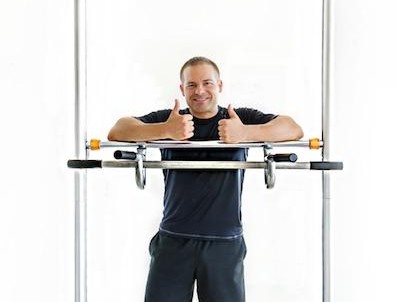
Welcome! Take this opportunity now to SIGN UP FOR MORE!
You can join over 50,000 subscribers worldwide and 1000s of customers who are taking control of their fitness and getting more from their workouts with SoloStrength® training systems!






